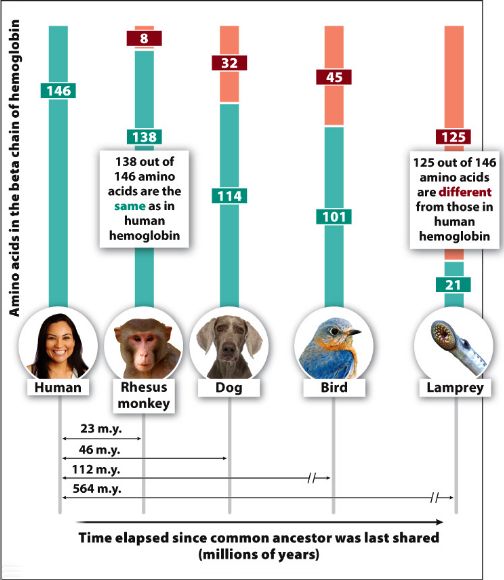 Molecular record
Molecular record
Evolutionary changes involve accumulation of mutations.
Distantly-related organisms accumulate a greater number of mutations than closely-related ones.
This divergence is seen among vertebrates in the amino acids of a hemoglobin protein.
Humans are closely related to rhesus monkeys, with 8
differences out of 146; the distantly related lamprey has 125
differences.
Mutations are random and accumulate at a constant rate,
so can be used as a molecular clock to date a common ancestor among related
species.
 Evolution and natural selection
Evolution and natural selection 
 Evolution and natural selection
Evolution and natural selection 